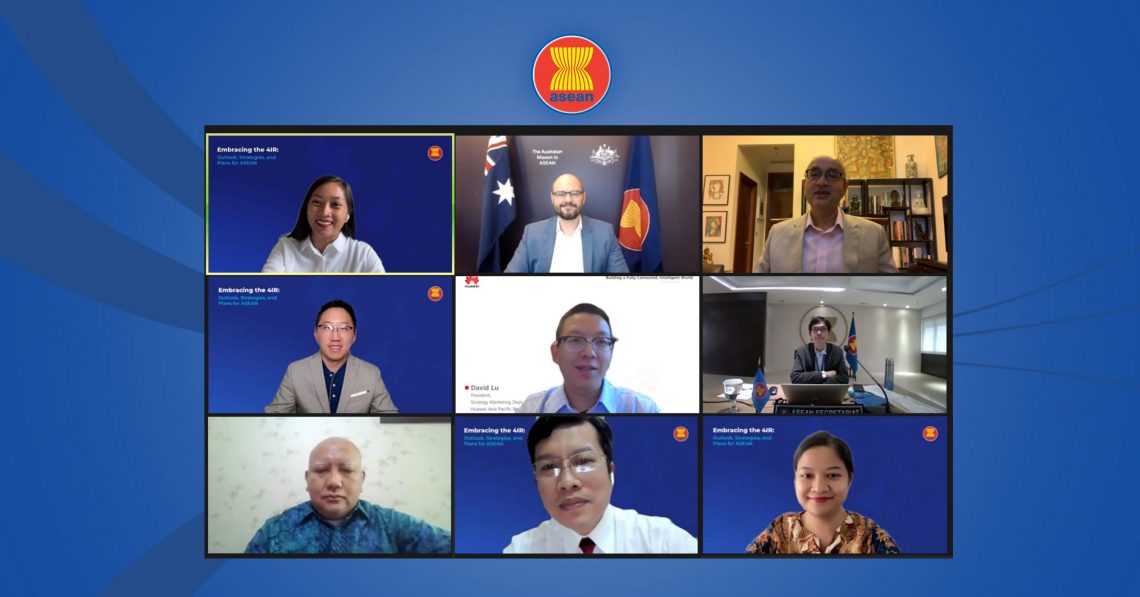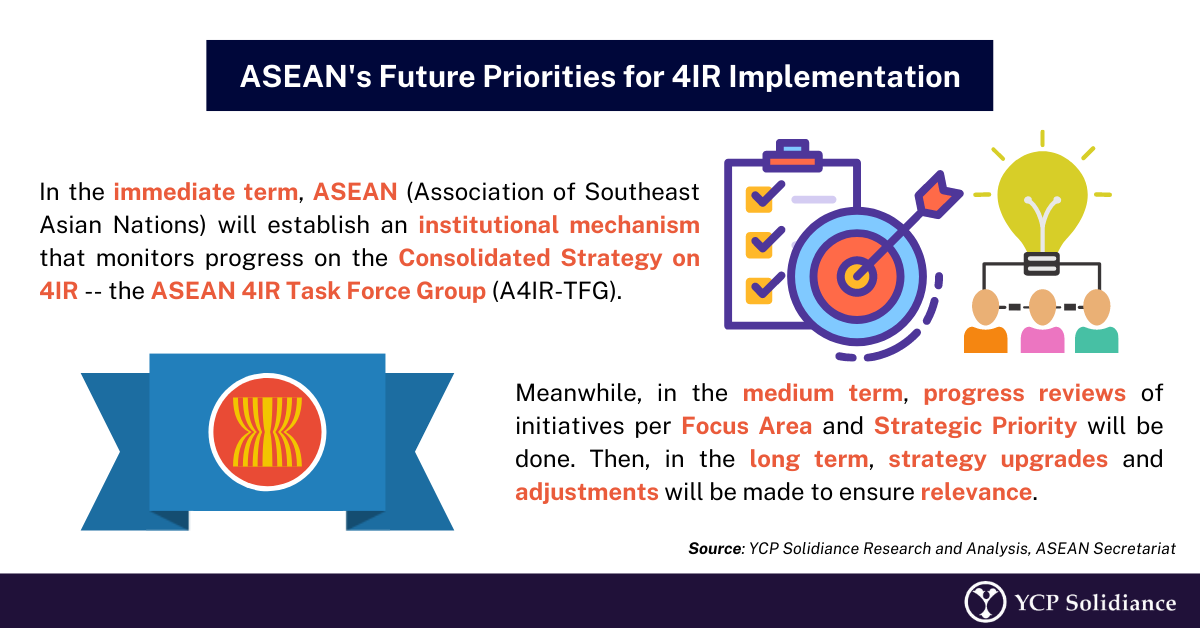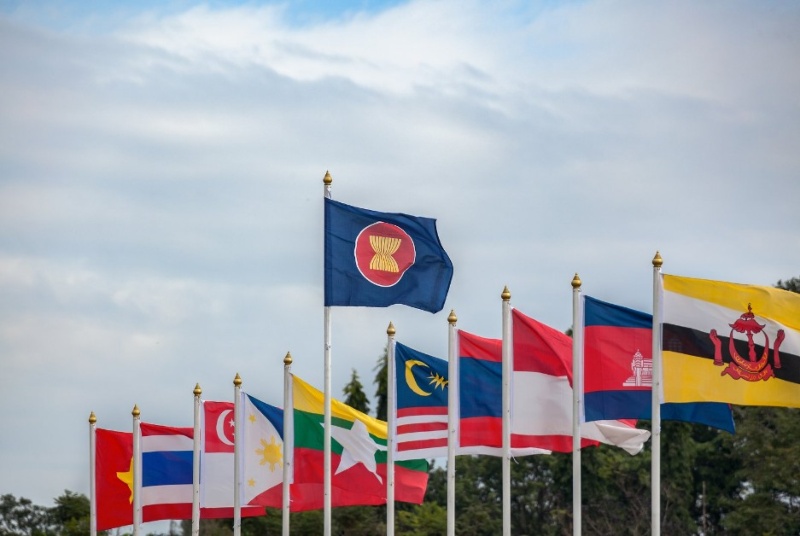On January 26, 2022, the Association of Southeast Asian Nations held “Embracing the 4IR: Outlook, Strategies, and Plans for ASEAN,” the official socialization of the Consolidated Strategy on the Fourth Industrial Revolution for ASEAN. This carefully crafted framework aims to help guide the region’s development as it builds a unified digital community.
The event started off with opening remarks from His Excellency Satvinder Singh, the Deputy Secretary-General for the ASEAN Economic Community, and the Ambassador of Australia to ASEAN, His Excellency Will Nankervis. The session then proceeded with a panel discussion moderated by YCP Solidiance Partner Anna Rellama, who was heavily involved in the development of the Consolidated Strategy. The panel of experts discussed what changes, developments, and trends stakeholders can expect as Southeast Asia rapidly digitizes and heads toward the Fourth Industrial Revolution. 
Transformation Amidst the Pandemic
Catalyzed by the difficulties that have emerged because of the COVID-19 pandemic, digital transformation within Southeast Asia has occurred at a rapid pace. As per data from Deputy Secretary-General H.E. Satvinder Singh, there are currently an estimated 463 million internet users across the region; a figure which has drastically increased due to an influx created by the pandemic.
Furthermore, in 2021, mobile e-commerce adoption rates reflected that 72% of internet users across four ASEAN member-countries (Indonesia, Philippines, Thailand, and Malaysia) engaged in online shopping for the first time, signifying rapid development in terms of digital transformation, the internet economy, and other related industries like e-commerce, all of which bodes well for 4IR.
Although the progress achieved has been impressive, investment in certain areas and technologies must be increased. For instance, in terms of Artificial Intelligence (AI) investment, ASEAN currently invests 2 USD per capita only in comparison to the United States and China, which invests 155 USD and 21 USD per capita, respectively. Therefore, for ASEAN member-states to fully realize the potential benefits that 4IR offers, investment in untapped markets like AI will be key.
While addressing challenges related to the advancement of 4IR is a difficult venture, the ASEAN is prepared to overcome such obstacles. By crafting several initiatives related to 4IR that are guided by the three key pillars of the ASEAN Community—namely, the ASEAN Political-Security Community (APSC), the ASEAN Economic Community (AEC), and the ASEAN Socio-Cultural Community (ASCC)—the ASEAN Consolidated Strategy adopts a holistic approach to ensure balanced development. Expect the creation of the Consolidated Strategy on the Fourth Industrial Revolution (4IR) for ASEAN to play a major role in the years to come. 
Detailing ASEAN’s 4IR Strategy
As described by Dr. Alexander Chandra of the ASEAN Secretariat, 4IR is the convergence of physical and digital communities that encompass governments, businesses, and societies. As such, the implementation of the Consolidated Strategy will require necessary adjustments from these sectors. For instance, governments will need to shift their perspective as they craft policies and regulations to be more adaptable to 4IR development.
Similarly, societies will need to become more inclusive of their members in the digital space by enacting specific measures, such as programs geared to equipping citizens with relevant skillsets needed to succeed amidst the digital revolution. The ASEAN will be prioritizing these focus areas and strategic priorities:
- Technological Governance and Cybersecurity: With governments having to adjust to rapid digital transformation, how governance is carried out must now consider nuances introduced by 4IR, such as the creation of e-government initiatives, respect to data in the context of privacy and security, or even monitoring and vigilantly addressing cybercrime.
- Digital Economy: To develop resilient, inclusive, and most importantly, competitive economies, ASEAN nations will need to harness technologies to fully maximize their potential. This can be done in several ways; for instance, the adoption of smart agriculture or digitally enabling MSMEs.
- Digital Transformation of Society: When creating digital communities, it will be essential to utilize digital solutions to address the needs of citizens. For example, the upskilling and reskilling of workers to ensure that the technical ability of citizens is adequate in the context of 4IR. Beyond this, digital transformation of society will also take place in other areas, such as digital inclusion of minority groups or cultural development through digital content creation.
Considering that the Consolidated Strategy on the Fourth Industrial Revolution (4IR) for ASEAN is the product of collaboration from several parties in the region, such as member-countries, sectoral bodies, and private stakeholders like YCP Solidiance, 4IR is fast becoming a unified vision for the entirety of Southeast Asia. This comprehensive framework not only aims to manage the potential benefits versus risks, but more importantly, it is ASEAN’s attempt at creating a forward-thinking, inclusive, and highly adaptable region that hopes to place itself at forefront of the digital revolution.
For more insights on how ASEAN member-countries are adapting to the Fourth Industrial Revolution, subscribe to our newsletter here.






